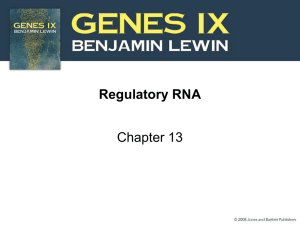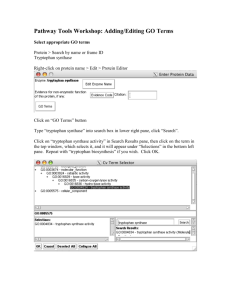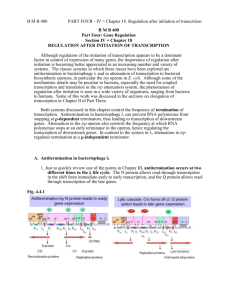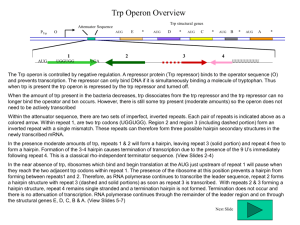Chapter 13
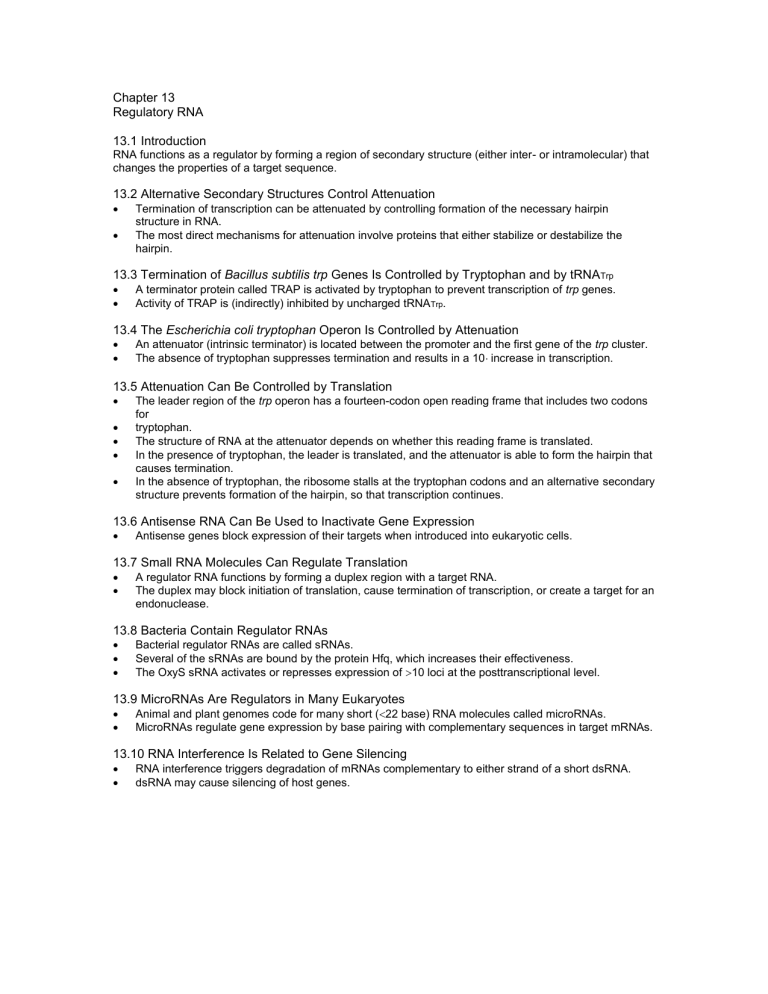
Chapter 13
Regulatory RNA
13.1 Introduction
RNA functions as a regulator by forming a region of secondary structure (either inter- or intramolecular) that changes the properties of a target sequence.
13.2 Alternative Secondary Structures Control Attenuation
Termination of transcription can be attenuated by controlling formation of the necessary hairpin structure in RNA.
The most direct mechanisms for attenuation involve proteins that either stabilize or destabilize the hairpin.
13.3 Termination of Bacillus subtilis trp Genes Is Controlled by Tryptophan and by tRNA
Trp
A terminator protein called TRAP is activated by tryptophan to prevent transcription of trp genes.
Activity of TRAP is (indirectly) inhibited by uncharged tRNA Trp .
13.4 The Escherichia coli tryptophan Operon Is Controlled by Attenuation
An attenuator (intrinsic terminator) is located between the promoter and the first gene of the trp cluster.
The absence of tryptophan suppresses termination and results in a 10
increase in transcription.
13.5 Attenuation Can Be Controlled by Translation
The leader region of the trp operon has a fourteen-codon open reading frame that includes two codons for
tryptophan.
The structure of RNA at the attenuator depends on whether this reading frame is translated.
In the presence of tryptophan, the leader is translated, and the attenuator is able to form the hairpin that causes termination.
In the absence of tryptophan, the ribosome stalls at the tryptophan codons and an alternative secondary structure prevents formation of the hairpin, so that transcription continues.
13.6 Antisense RNA Can Be Used to Inactivate Gene Expression
Antisense genes block expression of their targets when introduced into eukaryotic cells.
13.7 Small RNA Molecules Can Regulate Translation
A regulator RNA functions by forming a duplex region with a target RNA.
The duplex may block initiation of translation, cause termination of transcription, or create a target for an endonuclease.
13.8 Bacteria Contain Regulator RNAs
Bacterial regulator RNAs are called sRNAs.
Several of the sRNAs are bound by the protein Hfq, which increases their effectiveness.
The OxyS sRNA activates or represses expression of
10 loci at the posttranscriptional level.
13.9 MicroRNAs Are Regulators in Many Eukaryotes
Animal and plant genomes code for many short (
22 base) RNA molecules called microRNAs.
MicroRNAs regulate gene expression by base pairing with complementary sequences in target mRNAs.
13.10 RNA Interference Is Related to Gene Silencing
RNA interference triggers degradation of mRNAs complementary to either strand of a short dsRNA.
dsRNA may cause silencing of host genes.
